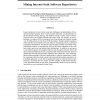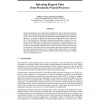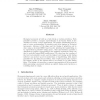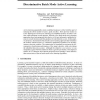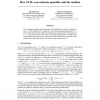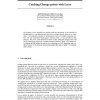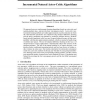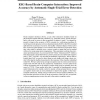NIPS
2007
14 years 1 months ago
2007
We describe an analog-VLSI neural network for face recognition based on subspace methods. The system uses a dimensionality-reduction network whose coefficients can be either progr...
NIPS
2007
14 years 1 months ago
2007
Large repositories of source code create new challenges and opportunities for statistical machine learning. Here we first develop Sourcerer, an infrastructure for the automated c...
NIPS
2007
14 years 1 months ago
2007
Many perceptual processes and neural computations, such as speech recognition, motor control and learning, depend on the ability to measure and mark the passage of time. However, ...
NIPS
2007
14 years 1 months ago
2007
Point-based algorithms have been surprisingly successful in computing approximately optimal solutions for partially observable Markov decision processes (POMDPs) in high dimension...
NIPS
2007
14 years 1 months ago
2007
Biological movement is built up of sub-blocks or motion primitives. Such primitives provide a compact representation of movement which is also desirable in robotic control applica...
NIPS
2007
14 years 1 months ago
2007
Active learning sequentially selects unlabeled instances to label with the goal of reducing the effort needed to learn a good classifier. Most previous studies in active learning...
NIPS
2007
14 years 1 months ago
2007
We investigate quantile regression based on the pinball loss and the ǫ-insensitive loss. For the pinball loss a condition on the data-generating distribution P is given that ensu...
NIPS
2007
14 years 1 months ago
2007
NIPS
2007
14 years 1 months ago
2007
We present four new reinforcement learning algorithms based on actor-critic and natural-gradient ideas, and provide their convergence proofs. Actor-critic reinforcement learning m...
NIPS
2007
14 years 1 months ago
2007
Brain-computer interfaces (BCIs), as any other interaction modality based on physiological signals and body channels (e.g., muscular activity, speech and gestures), are prone to e...

